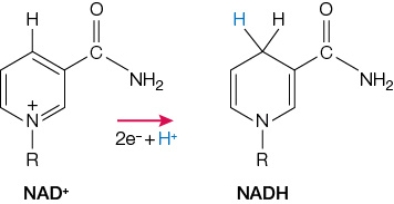Multiple Choice
Refer to the figure below.  NAD+ functions as a coenzyme in many enzyme-catalyzed reactions.The changes that take place in this coenzyme are the same for all of these reactions and are illustrated in the figure.It is likely that, in these reactions, NAD+
NAD+ functions as a coenzyme in many enzyme-catalyzed reactions.The changes that take place in this coenzyme are the same for all of these reactions and are illustrated in the figure.It is likely that, in these reactions, NAD+
A) functions as an electron donor in an oxidation-reduction reaction.
B) functions as an electron acceptor in an oxidation-reduction reaction.
C) forms a covalent intermediate during covalent catalysis.
D) induces strain in other substrates bound at active sites.
E) functions as a base in acid-base catalytic mechanisms.
Correct Answer:

Verified
Correct Answer:
Verified
Q171: In the presence of alcohol dehydrogenase, the
Q172: Which type of inhibitor can be overcome
Q173: The graph of enzyme activity versus substrate
Q174: An enzyme is found to be inhibited
Q175: To be metabolized, glucose must be converted
Q177: You observe an enzymatic reaction that exhibits
Q178: The enzyme glucose oxidase binds the six-carbon
Q179: In thermodynamic terms, water held back by
Q180: The five reactions listed are catalyzed by
Q181: The hydrolysis of sucrose into glucose and